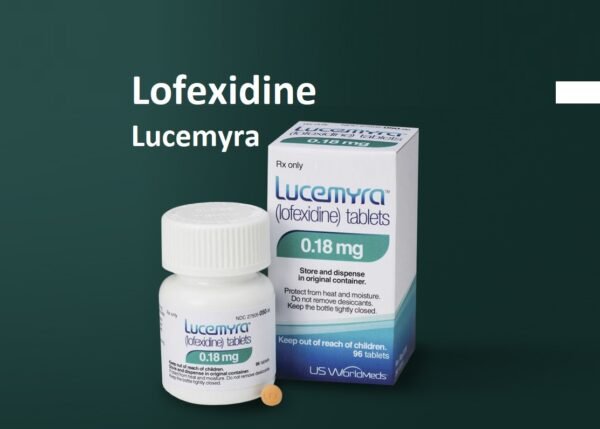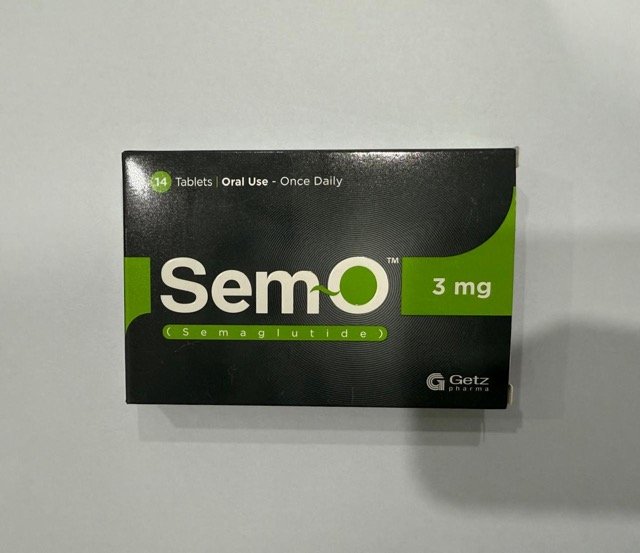Lofexidine is a medication used to manage opioid withdrawal symptoms. It is sometimes prescribed to individuals who are trying to stop using opioids, such as heroin or prescription painkillers, as part of a comprehensive treatment plan for opioid use disorder.
Lofexidine works by targeting the sympathetic nervous system to help reduce the symptoms associated with opioid withdrawal. Opioid withdrawal can be extremely uncomfortable and challenging, and Lofexidine can help alleviate some of the symptoms, such as anxiety, sweating, muscle aches, and more.
Lofexidine (Lucemyra) is an alpha-2A adrenergic receptor agonist that is used to help patients with symptoms of opioid withdrawal.
Lofexidine (Lucemyra) Uses:
- Opioid withdrawal:
- It is indicated for the relief of opioid withdrawal symptoms to facilitate the abrupt discontinuation of opioids in adults.
Lofexidine (Lucemyra) Dose in Adults:
Lofexidine (Lucemyra) Dosing in the Opioid withdrawal:
- Starting dose: Take 0.54 mg by mouth 4 times a day when the withdrawal symptoms are at their worst (usually for the first 5 to 7 days after stopping opioids).
- Max dose: Don't take more than 0.72 mg at one time, and no more than 2.88 mg in a day.
- Duration: You can take it for up to 14 days if needed. But, as the withdrawal symptoms lessen, you might need a lower dose.
Stopping the medicine:
- Don't stop it suddenly. Instead, decrease the dose little by little over 2 to 4 days (for example, lower the dose by 0.18 mg every 1 to 2 days).
Use in Children:
Not indicated.
Lofexidine (Lucemyra) Pregnancy Risk Category: N
- Lofexidine's effects during pregnancy aren't well-known.
- It's usually not a good idea to suddenly stop taking opioids if you're pregnant and dependent on them.
Lofexidine use during breastfeeding:
- We're not sure if lofexidine gets into breast milk.
- If you're thinking about breastfeeding while taking it, consider the possible risks to the baby, the benefits of breastfeeding, and how much the medicine helps the mother.
Lofexidine (Lucemyra) Dosing in Kidney Disease:
- If your kidneys are working really well (eGFR ≥90), you don't need to change the drug dose.
- If they're working okay (eGFR 30 to 89.9), take 0.36 mg four times a day.
- If they're working poorly (eGFR <30) or you're on dialysis, take 0.18 mg four times a day. For those on dialysis, the medicine doesn't get removed much by dialysis, so you can take it anytime.
Lofexidine (Lucemyra) Dosing in Liver disease:
- If your liver is slightly affected (Child-Pugh class A), you can take the regular dose of the drug.
- If it's moderately affected (Child-Pugh class B), take 0.36 mg four times a day.
- And if it's severely affected (Child-Pugh class C), take 0.18 mg four times a day.
Common Side Effects of Lofexidine (Lucemyra):
- Cardiovascular:
- Orthostatic hypotension
- Bradycardia
- Hypotension
- Central nervous system:
- Insomnia
- Dizziness
- Sedation
- Drowsiness
- Gastrointestinal:
- Xerostomia
Less Common Side Effects of Lofexidine (Lucemyra):
- Cardiovascular:
- Syncope
- Otic:
- Tinnitus
Contraindications to Lofexidine (Lucemyra):
The manufacturer hasn't listed any situations where you shouldn't use the drug.
Warnings and precautions
Accidental opioid overdose:
- Lofexidine isn't a cure for opioid addiction; it should be used as part of a complete plan to treat opioid addiction.
- After using lofexidine, people might be more sensitive to opioids.
- This means even a smaller dose of opioids than they used to take could be very dangerous and lead to a deadly overdose.
- If someone misses a dose of lofexidine or stops using it, they should be very careful as even a small amount of opioids could be harmful.
Cardiovascular effects
- This medicine might cause fainting, or a drop in blood pressure or heart rate.
- It's important to check vital signs before giving a dose and watch for symptoms like slow heartbeat and fainting.
- If there's a noticeable slow heartbeat or a significant drop in blood pressure, the dose should be reduced or the treatment paused.
- It's better not to use this medicine in people who have had recent heart problems, slow heartbeat issues, brain blood flow problems, or serious kidney issues.
CNS depression:
- This medicine might make you feel drowsy or less alert.
- Because of that, it's important to be careful when doing things that need focus, like using machines or driving.
Extension of QT
- This medicine might make a part of your heart's rhythm, called the QT interval, longer than normal.
- People born with a condition where their QT interval is already long should not use this medicine.
- For those at risk – like people with heart issues, liver or kidney problems, or taking certain other medicines – it's good to get a heart test (ECG) done.
- If there are any issues with minerals in the blood, fix those first and then check the heart rhythm before starting this medicine.
Hepatic impairment
- For people with liver problems, this medicine can have a stronger effect on extending a part of the heart's rhythm called the QTc interval.
- Be extra careful when giving this medicine to someone with liver issues.
Renal impairment
- For people with kidney problems, this medicine might strongly affect a part of the heart's rhythm called the QTc interval.
- Be very careful when using this medicine in someone with kidney issues and avoid using it in those with severe kidney problems.
Lofexidine: Drug Interaction
|
Alfuzosin |
May enhance the hypotensive effect of Blood Pressure Lowering Agents. |
|
Antipsychotic Agents (Second Generation [Atypical]) |
Blood Pressure Lowering Agents may enhance the hypotensive effect of Antipsychotic Agents (Second Generation [Atypical]). |
|
Benperidol |
May enhance the hypotensive effect of Blood Pressure Lowering Agents. |
|
Blood Pressure Lowering Agents |
May enhance the hypotensive effect of HypotensionAssociated Agents. |
|
Bradycardia-Causing Agents |
May enhance the bradycardic effect of other Bradycardia-Causing Agents. |
|
Brimonidine (Topical) |
May enhance the hypotensive effect of Blood Pressure Lowering Agents. |
|
Chloroquine |
|
|
Clofazimine |
QT-prolonging Miscellaneous Agents (Moderate Risk) may enhance the QTcprolonging effect of Clofazimine. Management: Monitor for QTc interval prolongation and ventricular arrhythmias when these agents are combined. Patients with additional risk factors for QTc prolongation may be at even higher risk. |
|
CNS Depressants |
Lofexidine may enhance the CNS depressant effect of CNS Depressants. Management: Drugs listed as exceptions to this monograph are discussed in further detail in separate drug interaction monographs. Exceptions: Amisulpride; CloZAPine; Droperidol; Flupentixol; OLANZapine; QUEtiapine; RisperiDONE; Thioridazine. |
|
CYP2D6 Inhibitors (Strong) |
May increase the serum concentration of Lofexidine. |
|
Diazoxide |
May enhance the hypotensive effect of Blood Pressure Lowering Agents. |
|
DULoxetine |
Blood Pressure Lowering Agents may enhance the hypotensive effect of DULoxetine. |
|
Gadobenate Dimeglumine |
QT-prolonging Miscellaneous Agents (Moderate Risk) may enhance the QTc-prolonging effect of Gadobenate Dimeglumine. Management: Monitor for QTc interval prolongation and ventricular arrhythmias when these agents are combined. Patients with additional risk factors for QTc prolongation may be at even higher risk. |
|
Halofantrine |
QT-prolonging Miscellaneous Agents (Moderate Risk) may enhance the QTcprolonging effect of Halofantrine. Management: Monitor for QTc interval prolongation and ventricular arrhythmias when these agents are combined. Patients with additional risk factors for QTc prolongation may be at even higher risk. |
|
Haloperidol |
QT-prolonging Miscellaneous Agents (Moderate Risk) may enhance the QTcprolonging effect of Haloperidol. Management: Monitor for QTc interval prolongation and ventricular arrhythmias when these agents are combined. Patients with additional risk factors for QTc prolongation may be at even higher risk. |
|
Herbs (Hypotensive Properties) |
May enhance the hypotensive effect of Blood Pressure Lowering Agents. |
|
Hypotension-Associated Agents |
Blood Pressure Lowering Agents may enhance the hypotensive effect of Hypotension-Associated Agents. |
|
Ivabradine |
Bradycardia-Causing Agents may enhance the bradycardic effect of Ivabradine. |
|
Lacosamide |
Bradycardia-Causing Agents may enhance the AV-blocking effect of Lacosamide. |
|
Levodopa-Containing Products |
Blood Pressure Lowering Agents may enhance the hypotensive effect of Levodopa-Containing Products. |
|
Lormetazepam |
May enhance the hypotensive effect of Blood Pressure Lowering Agents. |
|
Midodrine |
May enhance the bradycardic effect of Bradycardia-Causing Agents. |
|
Molsidomine |
May enhance the hypotensive effect of Blood Pressure Lowering Agents. |
|
Naftopidil |
May enhance the hypotensive effect of Blood Pressure Lowering Agents. |
|
Naltrexone |
Lofexidine may decrease the serum concentration of Naltrexone. |
|
Nicergoline |
May enhance the hypotensive effect of Blood Pressure Lowering Agents. |
|
Nicorandil |
May enhance the hypotensive effect of Blood Pressure Lowering Agents. |
|
Nitroprusside |
Blood Pressure Lowering Agents may enhance the hypotensive effect of Nitroprusside. |
|
Ondansetron |
QT-prolonging Miscellaneous Agents (Moderate Risk) may enhance the QTcprolonging effect of Ondansetron. Management: Monitor for QTc interval prolongation and ventricular arrhythmias when these agents are combined. Patients with additional risk factors for QTc prolongation may be at even higher risk. |
|
Pentamidine (Systemic) |
QT-prolonging Miscellaneous Agents (Moderate Risk) may enhance the QTc-prolonging effect of Pentamidine (Systemic). Management: Monitor for QTc interval prolongation and ventricular arrhythmias when these agents are combined. Patients with additional risk factors for QTc prolongation may be at even higher risk. |
|
Pentoxifylline |
May enhance the hypotensive effect of Blood Pressure Lowering Agents. |
|
Pholcodine |
Blood Pressure Lowering Agents may enhance the hypotensive effect of Pholcodine. |
|
Phosphodiesterase 5 Inhibitors |
May enhance the hypotensive effect of Blood Pressure Lowering Agents. |
|
Prostacyclin Analogues |
May enhance the hypotensive effect of Blood Pressure Lowering Agents. |
|
QT-prolonging Antidepressants (Moderate Risk) |
May enhance the QTc-prolonging effect of Lofexidine. Lofexidine may enhance the QTc-prolonging effect of QT-prolonging Antidepressants (Moderate Risk). Management: Monitor for QTc interval prolongation and ventricular arrhythmias when these agents are combined. Patients with additional risk factors for QTc prolongation may be at even higher risk. Exceptions: Doxepin (Systemic); Doxepin (Topical). |
|
QT-prolonging Antipsychotics (Moderate Risk) |
QT-prolonging Miscellaneous Agents (Moderate Risk) may enhance the QTc-prolonging effect of QT-prolonging Antipsychotics (Moderate Risk). Management: Monitor for QTc interval prolongation and ventricular arrhythmias when these agents are combined. Patients with additional risk factors for QTc prolongation may be at even higher risk. Exceptions: Pimozide. |
|
QT-prolonging Class IC Antiarrhythmics (Moderate Risk) |
QT-prolonging Miscellaneous Agents (Moderate Risk) may enhance the QTc-prolonging effect of QT-prolonging Class IC Antiarrhythmics (Moderate Risk). Management: Monitor for QTc interval prolongation and ventricular arrhythmias when these agents are combined. Patients with additional risk factors for QTc prolongation may be at even higher risk. |
|
QT-prolonging Kinase Inhibitors (Moderate Risk) |
May enhance the QTc-prolonging effect of QTprolonging Miscellaneous Agents (Moderate Risk). Management: Monitor for QTc interval prolongation and ventricular arrhythmias when these agents are combined. Patients with additional risk factors for QTc prolongation may be at even higher risk. |
|
QT-prolonging Miscellaneous Agents (Moderate Risk) |
May enhance the QTc-prolonging effect of Lofexidine. Management: Monitor for QTc interval prolongation and ventricular arrhythmias when these agents are combined. Patients with additional risk factors for QTc prolongation may be at even higher risk. Exceptions: Chloroquine; Clofazimine; Domperidone; Gadobenate Dimeglumine; Halofantrine. |
|
QT-prolonging Moderate CYP3A4 Inhibitors (Moderate Risk) |
May enhance the QTc-prolonging effect of QT-prolonging Miscellaneous Agents (Moderate Risk). QT-prolonging Moderate CYP3A4 Inhibitors (Moderate Risk) may increase the serum concentration of QT-prolonging Miscellaneous Agents (Moderate Risk). Management: Monitor for QTc interval prolongation and ventricular arrhythmias when these agents are combined. Patients with additional risk factors for QTc prolongation may be at even higher risk. |
|
QT-prolonging Quinolone Antibiotics (Moderate Risk) |
QT-prolonging Miscellaneous Agents (Moderate Risk) may enhance the QTc-prolonging effect of QT-prolonging Quinolone Antibiotics (Moderate Risk). Management: Monitor for QTc interval prolongation and ventricular arrhythmias when these agents are combined. Patients with additional risk factors for QTc prolongation may be at even higher risk. |
|
Quinagolide |
May enhance the hypotensive effect of Blood Pressure Lowering Agents. |
|
Ruxolitinib |
May enhance the bradycardic effect of Bradycardia-Causing Agents. Management: Ruxolitinib Canadian product labeling recommends avoiding use with bradycardia-causing agents to the extent possible. |
|
Serotonin/Norepinephrine Reuptake Inhibitors |
May diminish the antihypertensive effect of Alpha2-Agonists. |
|
Terlipressin |
May enhance the bradycardic effect of Bradycardia-Causing Agents. |
|
Tofacitinib |
May enhance the bradycardic effect of Bradycardia-Causing Agents. |
|
Risk Factor D (Consider therapy modification) |
|
|
Ajmaline |
Lofexidine may enhance the QTc-prolonging effect of Ajmaline. Management: Consider alternatives to this combination. Patients with other risk factors (eg, older age, female sex, bradycardia, hypokalemia, hypomagnesemia, heart disease, and higher drug concentrations) are likely at greater risk for these toxicities. |
|
Amifostine |
Blood Pressure Lowering Agents may enhance the hypotensive effect of Amifostine. Management: When amifostine is used at chemotherapy doses, blood pressure lowering medications should be withheld for 24 hours prior to amifostine administration. If blood pressure lowering therapy cannot be withheld, amifostine should not be administered. |
|
Amiodarone |
Lofexidine may enhance the QTc-prolonging effect of Amiodarone. Management: Consider alternatives to this combination. Patients with other risk factors (eg, older age, female sex, bradycardia, hypokalemia, hypomagnesemia, heart disease, and higher drug concentrations) are likely at greater risk for these toxicities. |
|
Beta-Blockers |
Alpha2-Agonists may enhance the AV-blocking effect of Beta-Blockers. Sinus node dysfunction may also be enhanced. Beta-Blockers may enhance the rebound hypertensive effect of Alpha2-Agonists. This effect can occur when the Alpha2-Agonist is abruptly withdrawn. Management: Closely monitor heart rate during treatment with a beta blocker and clonidine. Withdraw beta blockers several days before clonidine withdrawal when possible, and monitor blood pressure closely. Recommendations for other alpha2-agonists are unavailable. Exceptions: Levobunolol; Metipranolol. |
|
Domperidone |
|
|
Doxepin-Containing Products |
May enhance the QTc-prolonging effect of Lofexidine. Lofexidine may enhance the QTc-prolonging effect of Doxepin-Containing Products. Doxepin-Containing Products may diminish the therapeutic effect of Lofexidine. Management: Consider avoiding this combination when possiblke. Monitor for QTc interval prolongation and ventricular arrhythmias when these agents are combined. Patients with additional risk factors for QTc prolongation may be at even higher risk. |
|
Dronedarone |
Lofexidine may enhance the QTc-prolonging effect of Dronedarone. Management: Consider alternatives to this combination. Patients with other risk factors (eg, older age, female sex, bradycardia, hypokalemia, hypomagnesemia, heart disease, and higher drug concentrations) are likely at greater risk for these toxicities. |
|
Methadone |
Lofexidine may enhance the QTc-prolonging effect of Methadone. Management: Consider alternatives to this drug combination. If combined, monitor for QTc interval prolongation and ventricular arrhythmias. Patients with additional risk factors for QTc prolongation may be at even higher risk. |
|
Mirtazapine |
May diminish the antihypertensive effect of Alpha2-Agonists. Management: Consider avoiding concurrent use. If the combination cannot be avoided, monitor for decreased effects of alpha2-agonists if mirtazapine is initiated/dose increased, or increased effects if mirtazapine is discontinued/dose decreased. |
|
Obinutuzumab |
May enhance the hypotensive effect of Blood Pressure Lowering Agents. Management: Consider temporarily withholding blood pressure lowering medications beginning 12 hours prior to obinutuzumab infusion and continuing until 1 hour after the end of the infusion. |
|
QT-prolonging Agents (Highest Risk) |
May enhance the QTc-prolonging effect of Lofexidine. Management: Consider alternatives to this combination. If combined, monitor for QTc interval prolongation and ventricular arrhythmias. Patients with additional risk factors for QTc prolongation may be at even higher risk. Exceptions: Ajmaline; Amiodarone; Dronedarone; Methadone; Sotalol. |
|
Siponimod |
Bradycardia-Causing Agents may enhance the bradycardic effect of Siponimod. Management: Avoid coadministration of siponimod with drugs that may cause bradycardia. |
|
Sotalol |
Lofexidine may enhance the QTc-prolonging effect of Sotalol. Management: Consider alternatives to this combination. Patients with other risk factors (eg, older age, female sex, bradycardia, hypokalemia, hypomagnesemia, heart disease, and higher drug concentrations) are likely at greater risk for these toxicities. |
|
Tricyclic Antidepressants |
May diminish the therapeutic effect of Lofexidine. Management: Consider avoiding this drug combination when possible. If concurrent administration is required, monitor blood pressure carefully at the beginning of the combined therapy and when either drug is stopped. Adjust the dosage accordingly. Exceptions: Doxepin (Systemic); Doxepin (Topical). |
|
Risk Factor X (Avoid combination) |
|
|
Bromperidol |
Blood Pressure Lowering Agents may enhance the hypotensive effect of Bromperidol. Bromperidol may diminish the hypotensive effect of Blood Pressure Lowering Agents. |
|
Fexinidazole [INT] |
May enhance the QTc-prolonging effect of QT-prolonging Agents (Moderate Risk). |
|
Fexinidazole [INT] |
Bradycardia-Causing Agents may enhance the arrhythmogenic effect of Fexinidazole [INT]. |
|
Pimozide |
May enhance the QTc-prolonging effect of QT-prolonging Agents (Moderate Risk). |
|
QT-prolonging Strong CYP3A4 Inhibitors (Moderate Risk) |
May enhance the QTc-prolonging effect of QT-prolonging Miscellaneous Agents (Moderate Risk). QT-prolonging Strong CYP3A4 Inhibitors (Moderate Risk) may increase the serum concentration of QT-prolonging Miscellaneous Agents (Moderate Risk). |
Monitoring parameters:
Blood Pressure & Heart Rate
- Check how fast the heart is beating and the force of blood against artery walls.
Electrolytes & ECG for At-Risk Populations
- Measure levels of minerals (like sodium and potassium) in the blood.
- Perform an ECG (a test that checks the heart's rhythm) especially in those who are more likely to have heart problems.
Opioid Withdrawal Symptoms
- Look for signs that the body is missing the opioid drug, like sweating, shaking, or feeling anxious.
How to administer Lofexidine (Lucemyra)?
You can take it whether you've eaten or not.
Mechanism of action of Lofexidine (Lucemyra):
- Lofexidine is a drug that affects a part of the nervous system, making it release less of a chemical called norepinephrine and calming things down.
- It sticks to specific receptors in the body (alpha-2A and alpha-2C receptors).
- It's pretty picky, especially for the alpha-2A receptor, and this selectivity means it's likely to cause fewer blood pressure-related side effects compared to a similar drug called clonidine.
Absorption:
- The drug gets into the body well when taken by mouth.
Distribution:
- It spreads throughout the body. When given through a vein (IV), it's present in a smaller volume compared to when taken by mouth.
Protein Binding:
- About 55% of the drug attaches to proteins in the body.
Metabolism:
- The drug is broken down in the gut during absorption (about 30% of the dose), and the rest goes through the liver where enzymes like CYP2D6, CYP1A2, and CYP2C19 help to process it.
Bioavailability:
- When taken by mouth, about 72% of the drug actually gets into the bloodstream.
Half-life:
- It takes about 11 to 13 hours to eliminate half of the drug from the body after the first dose and about 17 to 22 hours once the body is used to it.
Time to Peak:
- The highest amount of the drug in the blood is reached about 3 to 5 hours after taking it.
Excretion:
- The body gets rid of the drug mainly through urine (about 93.5%), with a small amount found in the feces (about 0.92%).
International Brand Names of Lofexidine:
- Lucemyra
- BritLofex
- Detoxydine
- Hopdetox
- Kai Er Ding
Lofexidine brand names in Pakistan:
Not Available.



.jpeg)



